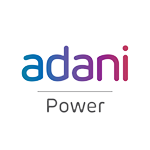PS Empanelment
Keeping the learning outcomes of the program in mind, the Institute has an empanelment process for new companies to become Practice School Partners.
Aspiring organizations can reach out to the contacts provided under the contact section. Key information about the company is collected and reviewed based on which the company is empaneled as a Practice School partner.
The participating organization can then send information regarding the required number of students, the disciplines/areas desired, if any, the skill sets required, facilities offered such as stipend, and any other relevant information. The same is made available to students for their preferences. Finally, students are allotted to the organizations after matching requirements with the students' background, keeping their preferences and merit in view.
(a) PS I conducted in the summer following the second year (when the students would have had their common foundation courses (very strong in breadth and depth here at BITS) plus a few other courses. this is principally exposure oriented although there is also a project component.
(b) PS II, for five and a half months (July - Dec and Jan - Jun) in the final year of study. This is totally project based, the student works in a group on live projects in the industry.
Both of these are courses, (integral to the degree programmes), which are evaluated by our faculty, and where the students earn credits. Practice School is optional but almost 100% of the students opt for it.We depute our faculty to monitor and evaluate the students, and to ensure that the rigour and seriousness of the programme is maintained, and that the students put in their best efforts.
The option is also available in the Higher Degree (postgraduate) programs,where it is a single course in the final semester, operated in the same fashion as PS II above.
We have successfully operated this educational process for over 50 years. We strive continuously to structure the programme such that it enhances, on the one hand the learning acquired by the students, and on the other, the contribution they are able to make towards developmental activities in the host organization. This is an academic mission for BITS, Pilani.






















































